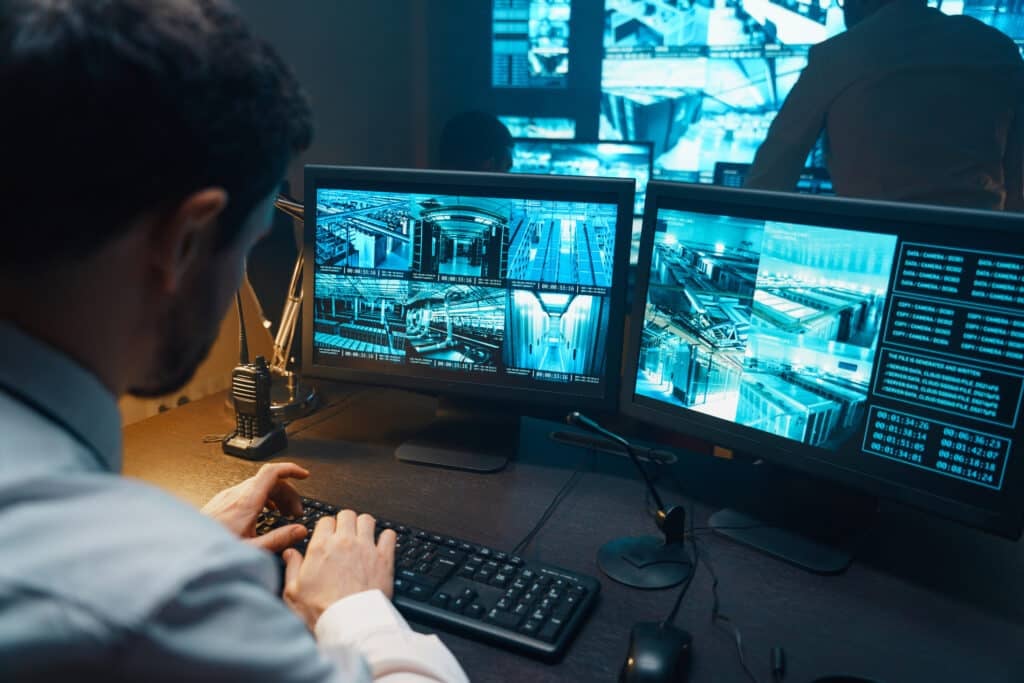This blog post was originally published at Visidon’s website. It is reprinted here with the permission of Visidon.
A couple of weeks ago, we had the opportunity to exhibit at ISC West 2025 in Las Vegas—the flagship global event for security and surveillance professionals. As always, this show served as a crystal ball for the industry, offering a glimpse into the technological priorities and innovations shaping the months ahead.
One key takeaway? Imaging technologies—powered by AI—are at the heart of the surveillance revolution. From video analytics to privacy-aware systems, it’s clear that the industry is evolving fast. Let’s break down the biggest trends we saw and how they connect with the work we’re doing in AI-based image and video quality enhancement.
AI-Powered Video Analytics Go Mainstream
Artificial Intelligence, particularly deep learning, has solidified its role in surveillance. The transition from centralized to edge AI—where analysis happens directly in the camera—was one of the most talked-about advancements at ISC West. This shift means faster reaction times, reduced bandwidth usage, and smarter event detection.
Applications like facial recognition, real-time threat identification, and behavioral analytics are no longer futuristic—they’re quickly becoming baseline features. This aligns with our own mission: using AI to enhance the clarity and accuracy of what cameras capture, making video analytics more effective and reliable.
Multispectral and Thermal Imaging for 24/7 Awareness
We also saw a strong focus on thermal and multispectral imaging, technologies that used to be reserved for military or critical infrastructure. Now, they’re finding their way into smart cities, airports, and even public transit systems.
These advanced imaging solutions ensure operational visibility and high analytics performance in all conditions, including nighttime, heavy fog, rain, or snow. A key trend gaining momentum among security tech vendors is the integration of standard RGB sensors with multispectral and thermal imaging into unified systems. This fusion allows vendors to deliver a multi-layered view that combines detailed visual context (RGB), spectral data for material differentiation (multispectral), and heat signatures (thermal).
For solution providers, this hybrid approach enhances detection accuracy, supports real-time decision-making, and expands use-case flexibility—offering a compelling edge in a competitive surveillance market.
Cloud-Connected Surveillance and Cybersecurity
The growth of Video Surveillance as a Service (VSaaS) was on full display. As more systems move to the cloud, manufacturers are doubling down on secure, encrypted, and hybrid-cloud architectures. This transition is not only about scalability and accessibility but also about strengthening cybersecurity and data protection.
Cloud-connected systems offer real-time access and remote management capabilities, which are increasingly essential in modern surveillance applications. However, with this convenience comes a heightened responsibility to ensure data integrity and system resilience against cyber threats.
This shift emphasizes the importance of trustworthy imaging, where AI assists—not replaces—human decision-making. The role of AI in cloud-connected surveillance is to enhance efficiency and accuracy, while ensuring transparency and maintaining human oversight at every critical juncture.
Ethical Surveillance and Privacy by Design
As surveillance expands into everyday environments, the industry is responding to growing concerns about privacy and the ethical use of AI. Many vendors showcased features such as privacy masking, audit logs, and end-to-end encryption—demonstrating a shift toward privacy-by-design systems.
When it comes to AI-based image and video enhancements, the most common concern centers on whether these technologies or networks generate new data, thereby “manipulating” the image or video and compromising its forensic authenticity.
For us, it is critical that people understand the core of AI-enhanced image processing: its primary goal is to maximize the signal-to-noise ratio (SNR) of the bitstream obtained from the sensor. Our approach focuses on reducing noise with minimal impact to the signal, emphasizing image restoration primarily through noise modeling.
Our AI network uses only the data that already exists within the frame; it does not generate new content that could compromise the integrity of the image. It makes no assumptions or guesses about the visual content.
Integration with Smart Infrastructure
Finally, surveillance is becoming more connected. Cameras are increasingly part of larger smart ecosystems, feeding data to IoT platforms, traffic control, retail analytics, and emergency systems.
This integrated approach calls for high-quality, real-time imaging that AI can interpret accurately. By boosting clarity and minimizing artifacts, our enhancement solutions ensure that the video fed into these systems is as actionable as possible.
Conclusion: Imaging Clarity Meets AI Responsibility
The imaging trends we observed at ISC West 2025 clearly point toward a smarter, faster, and more ethically aware surveillance industry. As AI becomes more deeply integrated into imaging workflows, the emphasis must remain on clarity, accuracy, and transparency.
At our company, we’re proud to contribute to this evolution. Our AI-based visual enhancement technology doesn’t make assumptions—it enhances what’s real. That’s the kind of innovation we believe will define the next chapter of surveillance: clearer images, smarter analytics, and safer environments for everyone.


